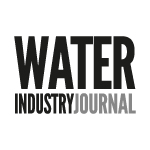Jessica Rauf-Thomas, head of operational asset management at EMCOR UK, discusses how strategic asset management can reduce the risks presented by ageing infrastructure.
We provide facilities management services to several water utility companies and work collaboratively with them to understand how they can effectively manage their assets and estates. When asked, the majority are experiencing the same challenges, with struggles to manage ageing infrastructure always high on the agenda. As more assets age and progress can be hampered by budget constraints, organisations need support to plan and prevent asset failures and maintenance backlogs.
A key strategy of asset management lies in answering the question, ‘What assets should I replace and when?’. By employing a comprehensive asset management strategy utilising lifecycle and criticality principles, estate teams can gain multiple benefits, especially for greater certainty for budget and cost planning, safeguarding service reliability and enhancing performance and building efficiency.
Asset management versus maintenance
There are two core approaches needed to gain control of an estate and properly assess and improve ageing infrastructure. Asset management strategies are complete plans, detailing how to effectively manage assets, and the resources required through their lifecycle, from acquisition through to disposal. Rich data, analytics and insights support these plans, helping to implement the adaptability and controllability that next-generation building management systems offer, while supporting exactly how a customer’s facilities are being used today and readiness for how they may be used tomorrow.
Meanwhile, an asset maintenance schedule will create effective plans for the ongoing running and maintenance of operations while alleviating safety and reliability concerns. With the sheer number of assets in each portfolio, water companies can lose track of their state of repair, especially if records are kept in disparate spreadsheets or multiple online systems. The right maintenance strategy can reduce reactive works associated with a ‘fix on failure’ approach and can extend the natural lifespan of assets.
Business risk is lowered and resilience is gained by effectively reducing the likelihood of operational interruptions and ensuring that buildings and assets are kept in optimal working condition. This strategy enhances operational efficiency by also identifying under-utilised or redundant assets, assessing their age, condition, criticality and existing performance.
Building maintenance schedules
Collating and maintaining accurate data and information allows you to design optimised maintenance schedules for enhancing asset performance and reliability. Take the time to create a clearly defined maintenance schedule that works for your specific firm, providing a reliable overview of assets by keeping up to date with records and collating data from different sources.
The next step is to create a modern digital asset register. Reliable, accurate data is crucial in asset management, combined with the knowledge and experience of how to analyse that data and use it to inform decisions. A proactive approach to collating this data can also aid risk management, enhancing the safety of buildings while ensuring that regulations and industry standards are adhered to.
Technological enhancements
With many assets adopting tech in their development, a plan that acknowledges these advancements can support exactly how a customer’s facilities are being used and be ready for future changes. Tech can also alleviate the time taken to otherwise set up a complete plan, allowing you to gain better control of assets in a quicker timeframe.
Sensors, GPS, IoT, AI and tagging work well in a hybrid model alongside traditional asset surveying to create modern digital asset registers and advanced asset data management models. This tech can greatly aid these ‘operationally essential’ assets in staying safe, compliant and reliable, while AI tools in particular can support in the gathering of data remotely, increasing the rate and ease at which preventative measures and maintenance can be put into place.
Ensuring that all building tech and systems are aligned to create one source of truth is a notable challenge of tech integration, as managing multiple data streams in different formats can hamper progress. Creating robust data, insight and decision-making capabilities that sit at the heart of tailored strategies for enhanced asset management and asset maintenance is the ultimate goal.
Future-proofing your estate
A forward-thinking approach to asset management will enable water companies to react quickly to both known and unknown upcoming changes, such as potential new Government policy and regulations, in addition to gaining knowledge of how best to mitigate industry challenges – and opportunities.
As the industry continues to face uncertainties, creating and operating an asset management approach that considers multiple factors, including risk and resilience, best practice principles, and one that is based on intelligent data and insights will better equip firms to navigate future challenges and seize new opportunities.




